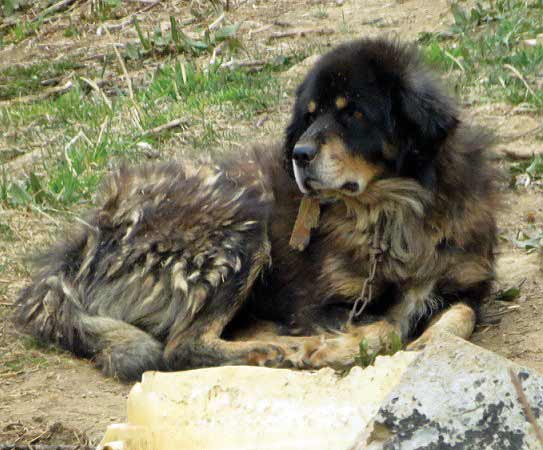Restoring centuries-old gompas in Mustang is just another day in the life of restoration artist Luigi Fieni.
Centuries-old gompas (monasteries) in Upper Mustang might sound like an improbable location to provide clear evidence of how art is a universal language, one that does not just cut across cultural or ethnographic boundaries but also through the linear boundary of time. Luigi Fieni, who heads the restoration work in Lo Manthang’s Thubchen and Jampa gompas speaks of this phenomena casually, with the air of a man who has seen so many amazing things that he is now impervious to such wondrous discoveries. 
We are talking about what events in his serendipitous life have led to a ‘job’ that has him meddling with ancient artworks that are half a millennia old to their original grandeur. This is when he tells me of how the colors and techniques used in the gompa’s artwork and the artwork in Rome dating back to more than 2000 years are the same, being different only in iconography.
Drawing and painting since the age of five and with a passion for flying and airplanes, Luigi decided to go for the safer choice and enrolled in an engineering school. He soon discovered that his heart was not in it and so he went back to what he was always good at - drawing. Soon, upon noticing that he was skilled at copying designs - a pre-requisite of sorts for a career in restoration work - he changed fields. This turned out to be a smart move. His first job, barely a week after graduation was with American Himalayan Foundation’s (AHF) Mustang Cultural Heritage Project as an assistant to his professor who was leading the project then. He arrived in Nepal in 1999, his professor quit after four years and since 2004, Luigi has been directing the project in Lo.
Since then, he has been a part of restoration works in many gompas in the area as well as training the locals in the skills required to take over the work. Working with a 35-strong team of local ‘artists’ that were assigned to the project and trained later, Luigi has over time developed a love for Himalayan culture. “It’s not just a job like any other. I feel I am doing something good by restoring such important work. It has a great deal of satisfaction,’ says Luigi. Since the project also trains locals in the skills required to work on the restoration themselves, the project has prospects for longevity that he hopes will outlast the duration of the project.
Luigi also has a company that does similar restoration work in Italy and he travelled back and forth, working in the winter in Italy and spending his summers his Mustang. “It became too much of a mess to manage so much work, so I decided to leave Europe and focus on my work in Nepal. But I need my dose of pizza and mozzarella so I go back every year,” he says, mentioning in humor Italy’s most famous culinary export.
For more on Luigi Fieni: www.luigifieni.com










